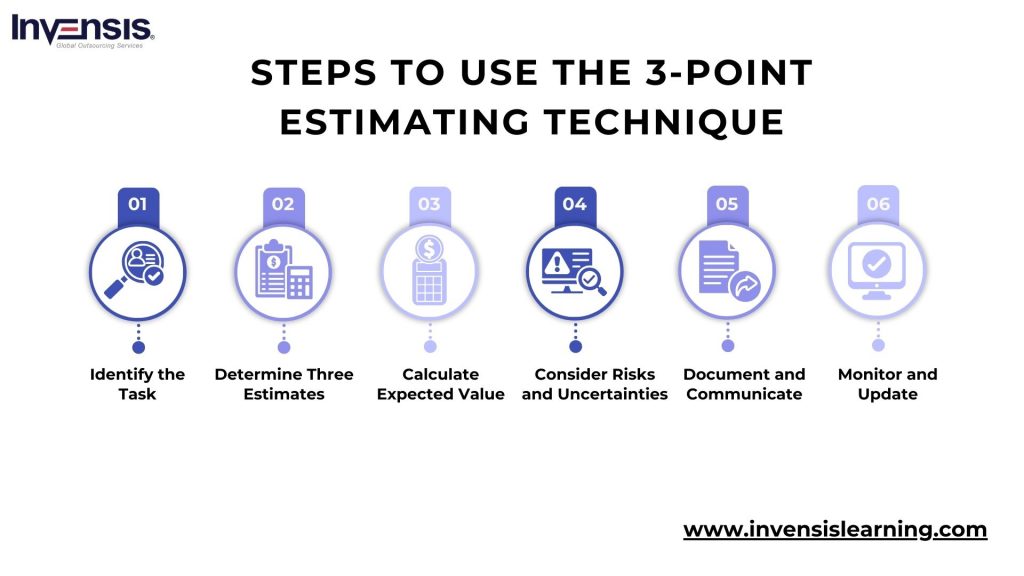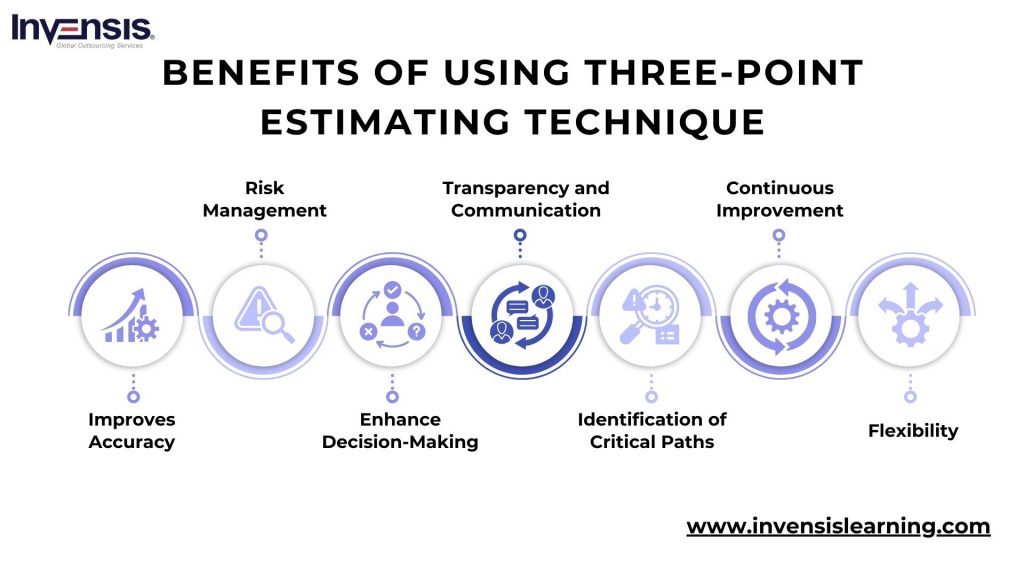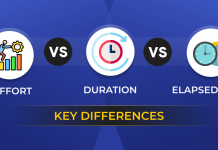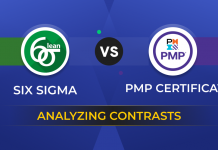
Accuracy is often inaccessible, and estimations are crucial in planning and execution when it comes to project management. Among the various techniques utilized, one stands out for its ability to mitigate uncertainties and provide a balanced approach: Three Point Estimating.
This method, rooted in statistical analysis, goes beyond the traditional single-point estimates, incorporating optimism, pessimism, and most likely scenarios to yield a more projection.
By considering a range of potential outcomes, Three-Point Estimating equips project managers with a clearer understanding of risks and uncertainties, fostering informed decision-making and enhancing project success rates.
In this blog, you will learn the core of three-point estimating, which considers not just one ideal scenario but three. By the end of this post, you’ll be equipped to understand how three-point estimating helps you manage risk, improve resource allocation, and set your projects up for success.
Table of Contents
- What is a Three-Point Estimating Technique?
- What is a Three-Point Estimating Formula?
- How to Use Three-Point Estimating Technique?
- Three-Point Estimating Examples
- Benefits of Using Three-Point Estimating Technique
- Estimating Challenges and Ways to Overcome Them
- Conclusion
What is a Three-Point Estimating Technique?
The Three-Point Estimating Technique is a method used in project management to provide more accurate and reliable estimates for various project parameters, such as time, cost, and resource requirements.
Unlike traditional single-point estimates, which offer only one figure for each parameter, Three-Point Estimating considers three different scenarios: the optimistic, pessimistic, and most likely outcomes.
Here’s how it works:
- Optimistic Estimate (O): This represents the best-case scenario, where everything goes smoothly without unexpected delays, obstacles, or additional costs. It reflects an ideal situation where all factors align favorably.
- Pessimistic Estimate (P): Conversely, the pessimistic estimate represents the worst-case scenario, accounting for potential setbacks, complications, or unforeseen issues that could arise during the project’s execution. It accounts for adverse conditions and challenges that may impact progress.
- Most Likely Estimate (M): The most likely estimate is a realistic assessment based on historical data, expert judgment, and current circumstances. It considers the most probable outcome, taking into account both favorable and unfavorable factors and balancing optimism and pessimism.
Once these three estimates (O, P, and M) are determined, project managers typically use statistical techniques such as the triangular distribution or the beta distribution to calculate a weighted average or a weighted mean, which serves as the final estimate.
These statistical methods give more weight to the most likely estimate, reflecting its higher probability of occurrence while still considering the range of potential outcomes provided by the optimistic and pessimistic estimates.
What is a Three-Point Estimating Formula?
The Three-Point Estimating Formula is a technique used in project management and risk assessment to estimate the duration or cost of a project task more accurately by considering different scenarios or uncertainties.
Three-point estimating offers two ways to calculate the expected value based on the three estimates (optimistic, most likely, pessimistic): Triangular Distribution and Beta Distribution (also known as PERT).
-
Triangular Distribution
This method treats all three estimates equally, essentially taking a simple average.
The formula for the expected value using triangular distribution is:
|
Expected Value (E) = (Optimistic Estimate (O) + Most Likely Estimate (M) + Pessimistic Estimate (P)) / 3 E=O+M+P/3 |
-
Beta Distribution (PERT)
This method, favored in project management due to its increased accuracy, acknowledges that the most likely estimate is more probable. It applies a weight of 4 to the most likely estimate, giving it a stronger influence on the final value.
The formula for Beta Distribution is:
|
Expected Value (E) = (Optimistic Estimate (O) + 4 * Most Likely Estimate (M) + Pessimistic Estimate (P)) / 6 E=O+4*M+P/6 |
How to Use the Three-Point Estimating Technique?
The Three-Point Estimation Technique is a method used in project management to estimate the duration or cost of tasks or activities more accurately by considering the uncertainty and risks involved.
It involves determining three estimates: the optimistic estimate (O), the most likely estimate (M), and the pessimistic estimate (P). These estimates are then used to calculate a weighted average or a more realistic estimate.
-
Identify the Task
Begin by defining the task or activity for which you need to estimate duration or cost. If necessary, break down the task into smaller, manageable components.
-
Determine Three Estimates
- Optimistic Estimate (O): Estimate the shortest possible duration or lowest cost that the task could reasonably be completed with if everything goes exceptionally well
- Most Likely Estimate (M): Estimate the duration or cost most likely to occur under normal circumstances, considering typical scenarios and variations
- Pessimistic Estimate (P): Estimate the longest possible duration or highest cost of the task if everything goes wrong or unexpected issues arise
-
Calculate Expected Value
-
- Use one of the distribution formulas (either Triangular or Beta) to calculate the expected value (E) based on the three estimates
- For the Triangular Distribution:
E=O+M+P/3?
- For the Beta Distribution:
E=O+M+P/6
-
Consider Risks and Uncertainties
Reflect on the potential risks and uncertainties associated with the task. Adjust the estimates and expected value accordingly if there are significant risks that could impact the outcome.
-
Document and Communicate
Record the estimates and expected value and any assumptions made during the estimation process. Communicate these estimates to relevant stakeholders, ensuring transparency and alignment on the projected timeline or budget.
-
Monitor and Update
As the project progresses, monitor the actual duration or cost of the task and compare it to the estimated value. Update the estimates if new information becomes available or if circumstances change significantly.
By following these steps, the Three-Point Estimating Technique helps project managers and teams develop more accurate estimates by considering a range of possible scenarios and uncertainties, leading to better-informed decision-making and planning.
Three-Point Estimating Examples
Let’s consider an example of a construction project for building a new office complex.
To estimate the project’s duration, the project manager might utilize the Three-Point Estimating Technique.
First, the project manager would break down the project into smaller tasks using a work breakdown structure (WBS). Let’s take the example of constructing the main building and assume the WBS includes: site preparation, foundation construction, structural framing, interior finishing, and landscaping.
Next, the project manager would apply the Three-Point Estimating Technique to estimate the duration of each task.
For instance, when estimating the foundation construction:
- Optimistic estimate: 5 weeks
- Most likely estimate: 7 weeks
- Pessimistic estimate: 10 weeks
Using these three estimates, the project manager can calculate the expected duration of the task using the Beta Distribution:
Expected duration (E) = (O+4*M+P) / 6
E = (5+4*7+10) / 6
E = 7.166 weeks
Once the project manager has estimated the duration of each task using the Three-Point Estimation Technique, they can create a Gantt chart that visualizes the sequence of tasks and their estimated durations.
The Gantt chart can help the project manager identify critical paths and dependencies between tasks and allocate resources effectively. Additionally, it aids in monitoring progress and adjusting timelines as needed to ensure project success.
Benefits of Using Three-Point Estimating Technique
Three-point estimating offers several benefits over traditional single-point estimates, making it a valuable tool for project managers.
Here’s a breakdown of the key benefits:
- Improves Accuracy: By considering three estimates—optimistic, most likely, and pessimistic—the technique provides a more comprehensive view of the potential range of outcomes for a task. This results in more accurate estimates compared to relying solely on single-point estimates.
- Risk Management: The technique inherently incorporates risk assessment by including pessimistic estimates. This helps project managers identify potential risks and uncertainties associated with tasks and develop contingency plans accordingly.
- Enhance Decision-Making: With a better understanding of possible outcomes, project managers can make more informed decisions about resource allocation, scheduling, and project planning. They can allocate resources more effectively and set realistic project timelines.
- Transparency and Communication: The Three-Point Estimating Technique encourages transparency in project planning and estimation. By documenting optimistic, most likely, and pessimistic estimates, project managers can communicate the level of uncertainty associated with tasks to stakeholders, fostering transparency and trust.
- Identification of Critical Paths: Utilizing the technique allows project managers to identify critical paths—the longest sequence of essential tasks—in a project. By identifying critical paths, project managers can prioritize activities and allocate resources to ensure that critical tasks are completed on time, thereby minimizing project delays.
- Continuous Improvement: As project managers gain more experience with the technique and collect data on actual versus estimated durations or costs, they can refine their estimation process. This leads to continuous improvement in project planning and estimation accuracy.
- Flexibility: The technique can be applied to various project types and industries. Whether it’s software development, construction, or manufacturing, the Three-Point Estimating Technique can be adapted to suit different project requirements and complexities.
Estimating Challenges and Ways to Overcome Them
Estimating project tasks can be challenging due to various factors, including uncertainty, incomplete information, and unforeseen circumstances.
Here are some common estimating challenges and ways to overcome them:
-
Uncertainty
Challenge 1: Uncertainty about project requirements, resource availability, or external factors can make it difficult to estimate accurately.
Solution: Break tasks into smaller, more manageable components and use techniques like the Three-Point Estimating Technique to account for uncertainty. Continuously gather and update information throughout the project to reduce uncertainty.
-
Lack of Historical Data
Challenge 2: In the absence of historical data or similar past projects, it can be challenging to estimate accurately.
Solution: Conduct research to gather data from similar projects or industries. If historical data is unavailable, consider using expert judgment or consulting with experienced team members to make more informed estimates.
-
Complexity
Challenge 3: Complex projects with multiple dependencies and variables can make estimation challenging.
Solution: Break down complex tasks into smaller, more manageable sub-tasks. Use techniques like Work Breakdown Structure (WBS) to organize tasks hierarchically and estimate each component individually. Subject matter experts should be involved in the estimation process to consider all factors thoroughly.
-
Scope Creep
Challenge 4: Changes in project scope or requirements can impact estimates and lead to delays and cost overruns.
Solution: Clearly define project scope and requirements upfront and establish a formal change management process to handle scope changes. Regularly communicate with stakeholders to manage expectations and address any scope changes promptly.
-
Optimistic Bias
Challenge 5: Estimators may have a tendency to be overly optimistic, leading to underestimation of project durations or costs.
Solution: Encourage realistic estimation by considering various scenarios, including optimistic, most likely, and pessimistic outcomes. Use techniques like Monte Carlo simulation to simulate various project scenarios and assess the likelihood of meeting deadlines and budgets.
Conclusion
Three-Point Estimating is a powerful project management technique that enhances project estimates’ accuracy and reliability. By considering optimistic, most likely, and pessimistic scenarios, this method provides a better understanding of potential outcomes, enabling better decision-making and risk management.
Using formulas like the Triangular Distribution or Beta Distribution, project managers can calculate expected values that reflect the inherent uncertainties of project tasks. This approach fosters transparency, improves stakeholder communication, and helps teams anticipate and mitigate risks effectively.
Ultimately, Three-Point Estimating empowers project managers to create more realistic project plans, allocate resources efficiently, and navigate complex projects with confidence.
Ready to advance your Project Management skills and unlock the power of three-point estimating? Invensis Learning offers different levels of Project Management Certification Courses designed to equip you with the knowledge and tools you need to excel in your career. Invest in your future today!

















